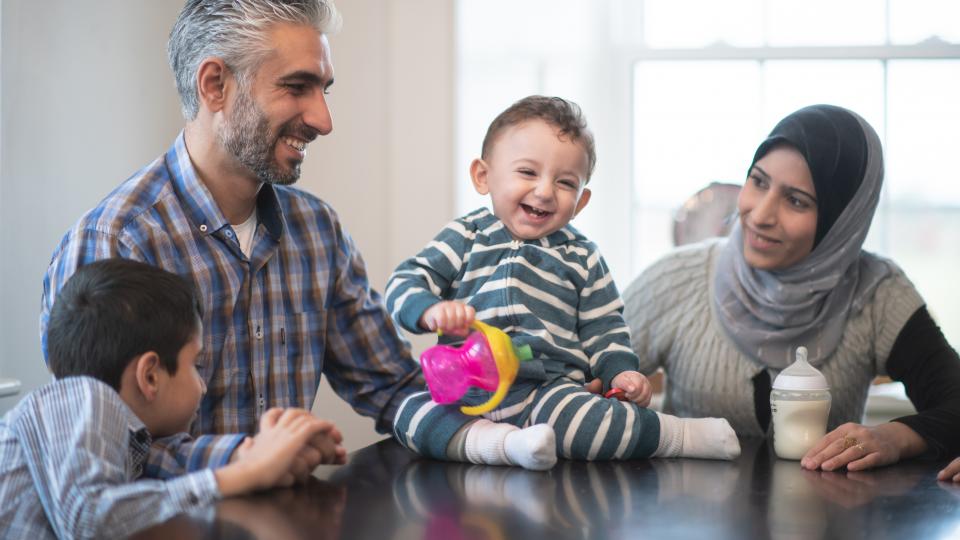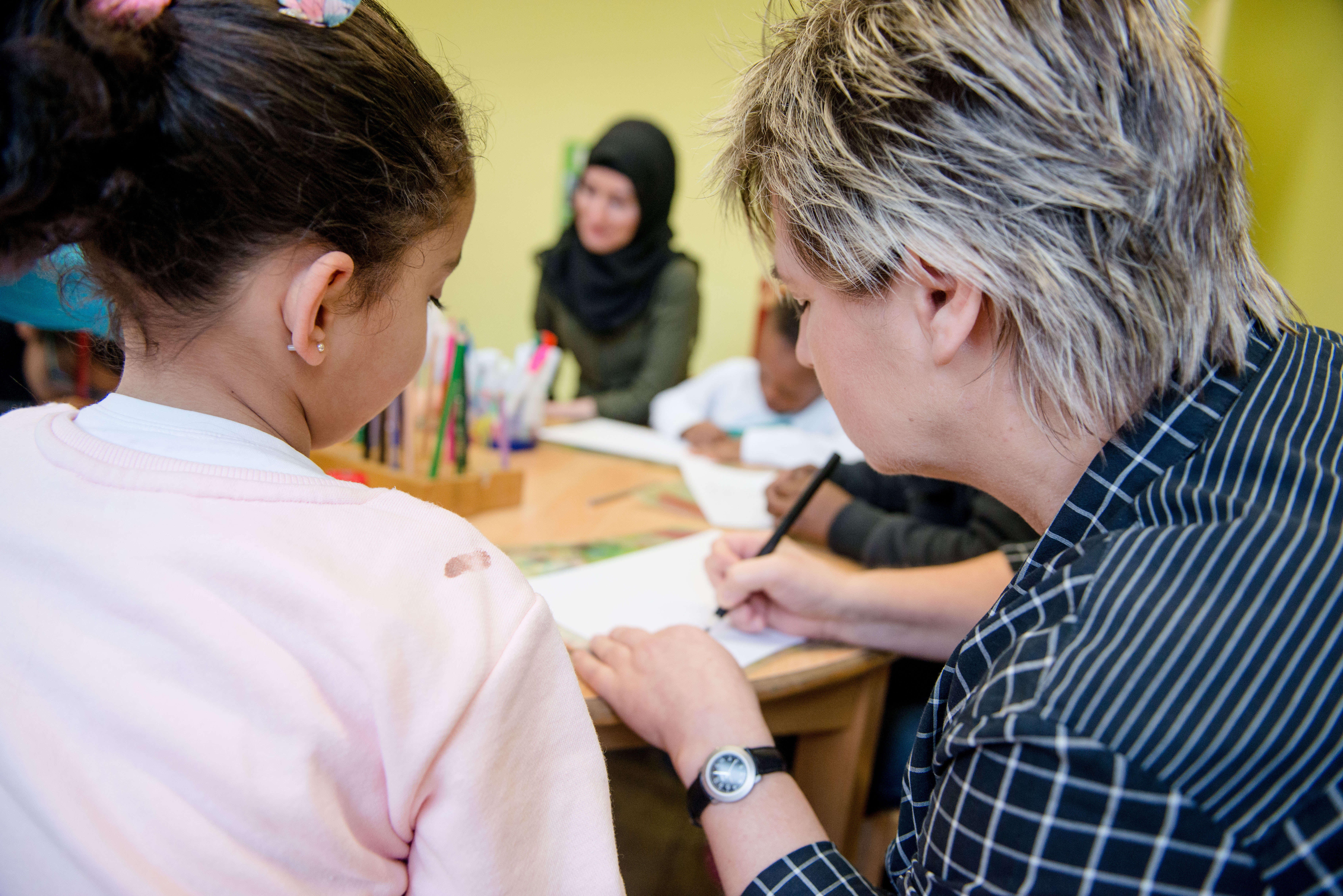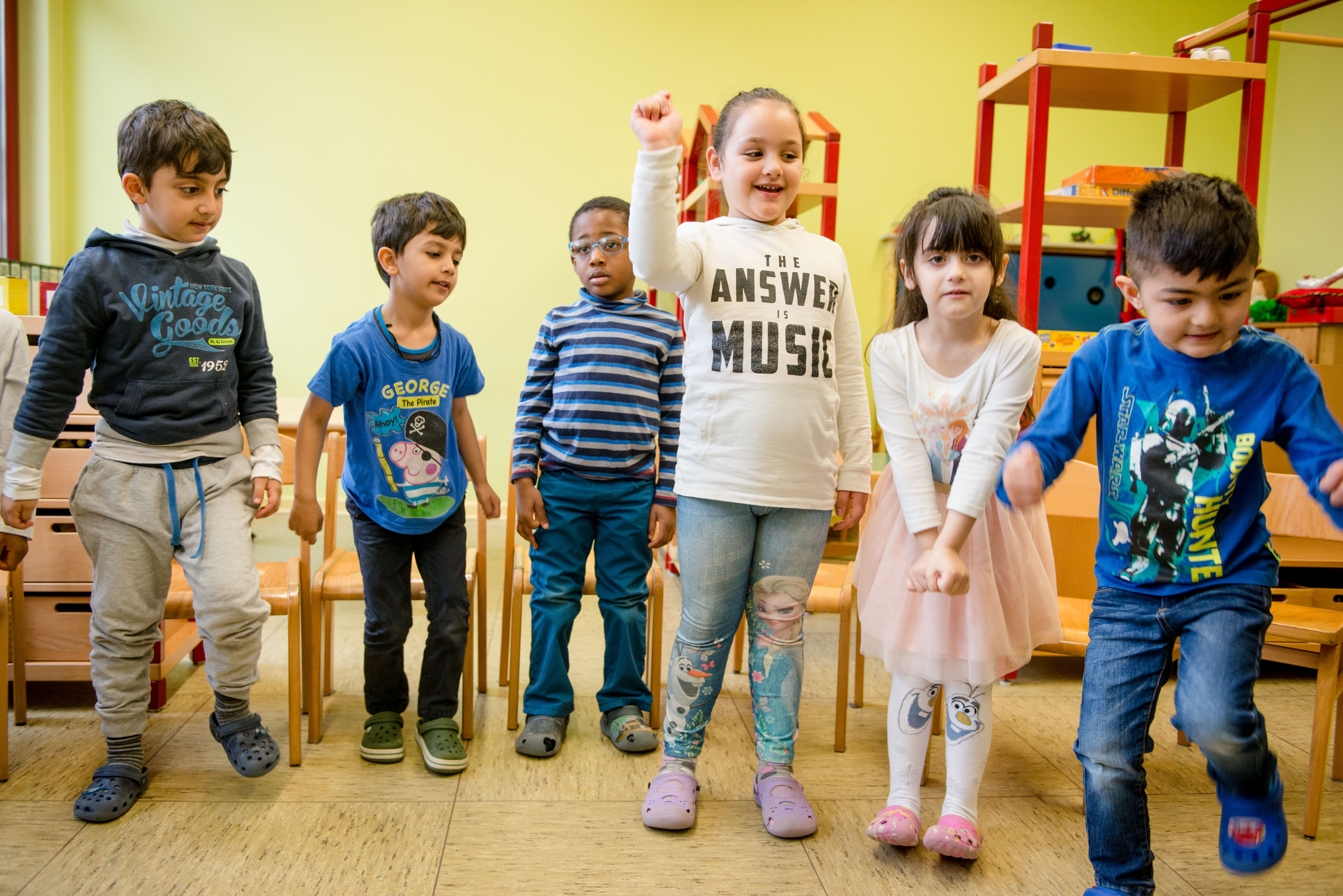
Bridge projects
What are bridge projects?
Forms of offer
Bridge projects are a good way of introducing children and their families to institutionalized forms of daycare. They take place as a supplement to the existing educational services offered by various providers and are geared towards the child's and family's life situation as well as the local circumstances. However, bridging projects are expressly not a substitute for regular child day care in accordance with Section 24 SGB VIII and do not fulfill any legal entitlement. The forms of provision vary from provider to provider, which means that they are individually designed on site.
Bridge projects are carried out in different forms. They are individually designed depending on the framework conditions and different needs.
PARENT-CHILD OFFERS
Parent-child programs usually take place once a week on the same day of the week, at the same time and in the same place for a few hours. They are often only offered for six months. The aim of these offers is to promote the relationship between parents and child, the shared experience of play activities and exchanges between parents.

CHILD DAY CARE
Child day care is an educational and childcare service that can be provided by one or more suitable childminders in their own home, in the home of the legal guardians or in rented premises. The bridging projects showed that places for children with refugee experience were mostly created in existing day care services. In child day care, the children experience a constant small group of a few children aged between 0 and 3 years. The time a child spends in day care is agreed individually with the parents.

GAME GROUPS
Bridge projects, which are carried out in the form of a playgroup, are mainly characterized by a rather constant group of children aged 3 to 6 years (sometimes also for children under three years). The children have the opportunity to come into contact and play together with other children in order to gain important experience. In this type of program, the parents are present in the playgroup during this time or they are free during this time and pick up their children again after the playgroup time. The playgroup usually only takes place for a few hours a week, but regularly recurs on a fixed day of the week, always at the same time and in the same place (sometimes several times a week or even daily).

Good practice examples for bridge projects
By providing needs-oriented services, bridge projects aim to make it easier for children and families with refugee experience to enter their first educational institution, a daycare center. Recommendations for structuring aids and solutions for the particular challenges have been derived from the experiences of implemented bridging projects. Professionals can find the summarized results below.
Challenges in bridge projects and solutions for professionals 48.26 KB
Recommendations for structuring aids for bridge projects 51.85 KB
Evaluation results
The joint project "Bridging cultures - Integration of children with refugee experience in daycare facilities" was scientifically led by Prof. Dr. Birgit Leyendecker from the Ruhr University Bochum and Prof. Dr. Timm Albers from the University of Paderborn (project duration: 01/2016 to 12/2018). The aim of the project was to evaluate the bridging projects in order to classify them according to scientific standards and to develop recommendations for action and practical materials tailored to them. In the first phase of the project, the conceptual content, structural framework conditions, educational processes and cooperation structures within the low-threshold services were scientifically examined. In addition, the psychosocial stress and resources of children with a refugee background were examined in depth.
The project was organized as a joint project and is characterized by an interdisciplinary mix of methods with qualitative and quantitative components. For example, a rating scale was used to record the structural quality, questionnaires and interviews to record behavioral problems and the mental health of the children as well as the structural and orientation quality of the bridging services, observation sheets to record the interaction quality and pedagogical processes or interviews to record the orientation quality and pedagogical actions in bridging projects. The data was collected from people in management positions, educational staff and parents in bridging projects.
The majority of children who visited the bridge projects (around 60%) were between three and six years old. Most of the children come from Syria, Iraq and Afghanistan. The group composition in bridge projects varies considerably in terms of the age and country of origin of the children. The children and families were looked after by educational staff with relevant educational qualifications. The majority of pedagogical staff have completed pedagogical training, e.g. as a childcare worker or educator (41.2%) or a relevant degree, e.g. social pedagogy or curative education (33%).
With regard to the psychosocial stress of the children in the bridge projects, compared to children of the same age without refugee experience, 3 out of 4 children with refugee experience exhibit behaviors that could indicate increased psychological stress (e.g. anxiety or attention problems). However, there is hardly any increased evidence of post-traumatic stress disorder. Overall, the children are well supported in processing what they have experienced through special attention from the educational staff.
The spatial and material facilities within the bridge projects are very heterogeneous. Depending on the type of offer, different spatial and material structural features could be observed, whereby excellent structural features can be found in particular in bridge projects that were integrated into large day care centers (e.g. age-appropriate furniture, individual retreat options for the children, material equipment for different educational areas or room design). However, parent-child programs and playgroups also have a high percentage of excellent and satisfactory structural features.
In summary, the observations in the bridging projects show that the children are offered a spatially and generally well-equipped learning environment. In almost all of the bridge projects visited, the children have the opportunity to engage with extensive materials for creative design. Learning environments that provide cognitive stimulation in specific educational areas were observed less frequently. However, children educate and learn through a learning-stimulating environment and are stimulated by it.
In the course of the evaluation, different methodological procedures and data (e.g. questionnaires and interviews) were used to identify four areas of action that guide the design of bridging projects: Cooperation with parents, arrival (creating security and trust), structuring everyday life and supporting children's skills. The areas of action were confirmed in 66 bridge projects visited by the researchers (field observations). In summary, it can be stated that the cooperation with parents is characterized to a large extent by the appreciative greeting at the beginning of the offer and a general exchange of information.
The involvement of parents or families in the bridging projects was observed in about a quarter of the bridging projects. With regard to the children, the staff in the bridge projects visited were largely successful in building positive relationships with the children and responding sensitively to their needs (area of action Arrival). The structure of many activities (action area Structuring everyday life) is characterized by free play phases. A structured phasing of the activities with rhythmic, recurring elements was observed to a lesser extent.
One focus of the pedagogical work in the area of skills development in the observed bridging projects is language education, with a particular focus on German language skills and promoting the children's vocabulary. Further linguistically and cognitively stimulating forms of language education tend to take a back seat in the observed bridge projects.
The teachers in the bridge projects were asked about the challenges they face in their day-to-day work, primarily dealing with emotions, trauma and refugee experience, language barriers, inter- and multiculturalism as well as communicating rules and boundaries. They also stated that they would like support in the form of further training in the areas of "flight, trauma and migration", "interculturality and diversity" and "legal framework conditions".
The Ministry (MKFFI) and the project partners at Ruhr University Bochum and Paderborn University have responded to the scientific findings and jointly developed evaluation-based practical materials. The following services and materials have been created to support work with families and children with refugee experience:
Application for bridge projects
The state of NRW has been providing budget funds for childcare in special cases since 2015. Appropriate project applications can be submitted to the state youth welfare offices by recognized independent and public youth welfare organizations via the local youth welfare offices.
You can find the relevant funding guidelines here: https://recht.nrw.de/lmi/owa/br_vbl_detail_text?anw_nr=7&vd_id=21982&ver=8&val=21982&sg=0&menu=0&vd_back=N
Further information, FAQs and links to the relevant application procedure can be found on the websites of the state youth welfare offices: